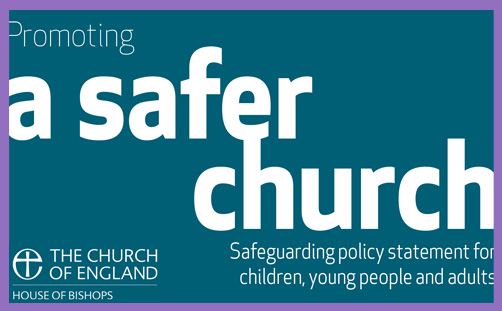
In the last couple of days an important decision from the Solicitors Regulation Authority concerning the CofE has appeared in the public domain. It is not a story recounting outrageous immorality on the part of a church leader, though the report does have a link with the late Bishop Peter Ball and his crimes. It recounts the unprofessional behaviour of a single individual who used to work as Registrar or chief legal officer for the Anglican Diocese of Gloucester. The officer concerned, Christopher Peak, has now seen his registration as a solicitor removed by the Solicitors Regulation Authority. This story has some importance in the wider relationships between the Church and the legal institutions of this country. Every member of the Church is, in a slight way, affected by the special legally enforceable rules that operate in the work of the national Church. There are certainly hundreds of professionals who are employed to oversee legal matters in the dioceses and at a national level. It is to be hoped that these qualified professionals will always give good service for the substantial sums of money that they earn to manage this aspect of church life.
At the heart of this legal story is not a decision or a court case. It is the account of a total absence, over a twenty-year period, of any challenge or legal questioning over a legal saga. The context of the case is the arrest and subsequent Caution of the then Bishop of Gloucester, Peter Ball for offences against young men. This part of the story is well-known. Having voluntarily agreed to vacate his see in 1992, Ball went on to an active retirement ministry for some twenty years. Eventually the case was re-examined, and Ball served a fifteen-month sentence in prison for his offences. The part of the story that is less well known is the fact that the Gloucester Diocesan Registrar, Christopher Peak, acted as a personal solicitor to Ball when the case first came into public view in 1992. In short, Peak agreed to negotiate with the police and the legal authorities in the task of mitigating the crimes of Ball. In this he seems to have enjoyed a measure of success, as Ball, despite his Caution, went on to enjoy many more years of retirement ministry. Somehow, Peak failed to recognise that it was totally inappropriate for him, as a chief diocesan legal officer, to act at the same time on behalf of his bishop under criminal investigation. In non-legal jargon, can it ever be right to represent the interests of the diocese and an accused bishop simultaneously? Is this not a case of a lawyer tolerating a clear conflict of interest?
The twenty-year gap that I have referred to above represents the period (1992- 2012) where Peak, the chief legal officer of a diocese, having legal responsibilities for promoting the welfare of that body, had chosen to identify with one party in a criminal case. One does not criticise Peak for taking on the role of a defence solicitor, thus presenting the best possible case for an accused party. Peak was entitled to defend Ball, but he was not entitled to have the role of representing the interests of the diocese as its Registrar at the same time. This conflict of interest should have been obvious to Peak as its head legal official. It should also have been obvious to others working in a legal capacity around him. For twenty years this situation of obvious conflict of interest was tolerated without any awareness of dissonance. Because Peak would not have been able to represent the diocese ‘without fear or favour’ in a legal case involving the former bishop and his diocese, he was compromising his ability to protect the diocese. No doubt, there were those within the church legal system nationally, who might have spotted something wrong with the situation. Somehow we suspect that the power of vested interests were wanting to keep a firm lid on any examination of what had gone wrong. In the end, it was not church lawyers that blew the whistle of what had been going on; it was the work of some lawyers following the case from the National Secular Society. It was they who, thirty years after the event, obtained this current ruling from the Solicitors Regulatory Authority. This deemed Peak’s behaviour as worthy of official censure and sanction.
Why is this story important? It is important for at least two reasons. The first is that legal offences by those working for the church, when they occur, have been, historically speaking, rarely challenged. The conflict of interest involved in having the Diocesan Registrar acting as a personal solicitor for the bishop should have been fairly obvious to anyone working in a legal capacity in Gloucester at the time. One suspects that deference to Peak by lawyers and church dignitaries alike supressed any such challenge. As Registrar and probably the most highly paid servant of the diocese, it was probably not difficult to overawe any potential opposition to his legal activity as personal solicitor in defending Ball. Initially, at any rate, the diocesan clergy unanimously supported Ball and it was only later that the possibility of guilt gradually dawned on them. The second factor is linked to the high financial rewards payable to lawyers who work for the Church. Just as Peak used his skill and power to successfully manage things legally for Ball, so we have witnessed the raw power of well-paid lawyers working openly to intimidate their victims in the case of the Christ Church/Percy case. We have discussed in earlier blogs the way that conflicts of interest were clearly apparent in that long-running saga. At Gloucester, the power of a Registrar acting as a defence lawyer must have been considerable. We know from the Charity Commission statement that the fees charged by the church lawyers working for Christ Church and Diocese of Oxford were massive and one suspects that considerable sums of charitable money were also spent defending Ball. We should always be able to expect the highest standards of ethical behaviour from lawyers working for the church. Somehow the events of recent years when specialist church lawyers have been involved have meant that our confidence in the church’s legal system is not as secure as we would like it to be.
The Peak affair is something that could easily be buried under the ecclesiastical legal carpet. It is however, I believe, saying something challenging to a future generation of church lawyers. After failures and evidence of legal malfeasance over recent years, the wider Church will always be watching your behaviour with greater scrutiny. In return for the millions we spend, and have spent, on legal services, we expect one thing above all. We expect the very highest standards of morality and ethics. These are already laid down by the legal profession itself as it seeks to serve the public in a variety of contexts. Breaches of trust, conflicts of interest, protecting reputations and institutional bullying should never be found coming among church legal officers. Also, protecting such behaviour, when practised by church dignitaries, is not part of your job. We need the service of good lawyers to help the Church of England in its work, but we need to be able to assume that you fully share our highest ethical values, even if not necessarily our beliefs. These values indeed already belong to your ethical and professional training. They include respect for all, justice, equality under the law and high levels of personal integrity. Recent failures by church lawyers in preserving such values have put many of us in a state of high alert. We want to see that the church legal system is being used to promote the cause of justice and goodness and not a means to bolster reputation management and indulge in unjust power games which damage so many.








